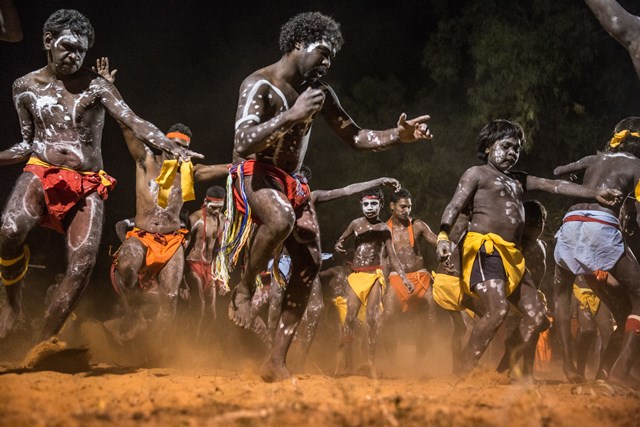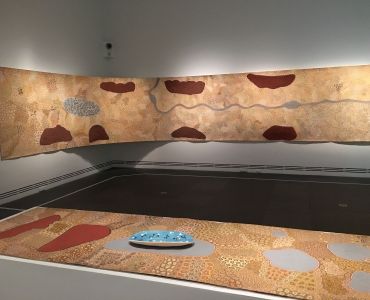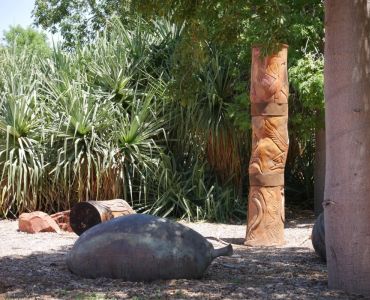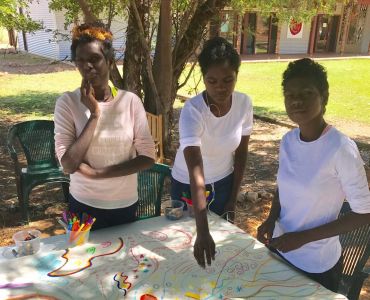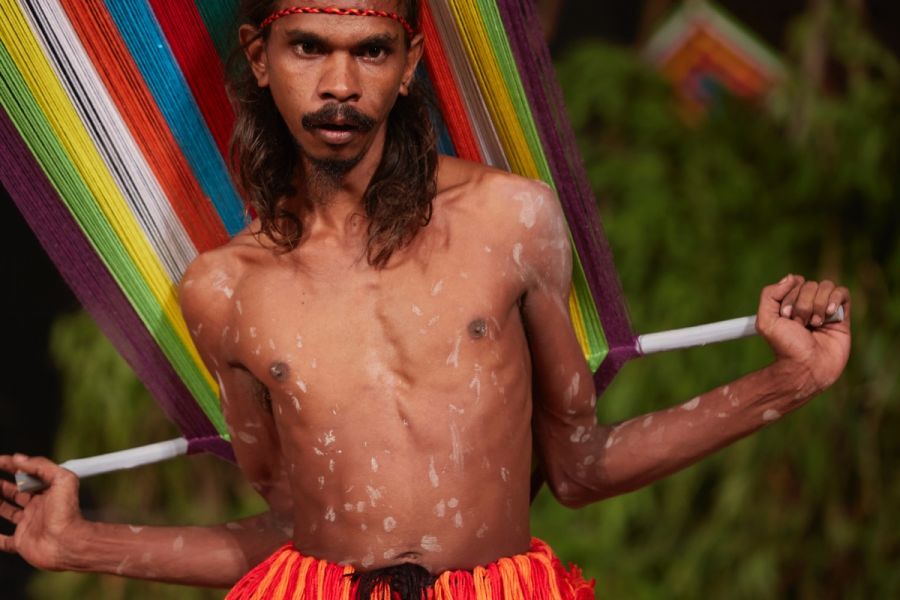
Cultural Performance
Cultural performances occur throughout the year and provide a rich insight into Miriwoong culture.Project Categories
Culture
Community
Project Status - On going
JOONBA, BALI BALI BALGA AND WANGGA/LIRRGA
Song and dance is an intrinsic aspect of Kimberley cultural life not just as a part of ceremony but as entertainment for family and community. Dances learnt as young children are continuously practiced. Performers travel as a troupe to other communities and share dances specific to their community and artist's dreamings.
Cultural performances are regularly performed throughout the year and compliment the visitor experience with a rich insight into Miriwoong culture.
Waringarri Dancers are often invited to perform at festivals and art fairs. In 2017 Mr. A Griffiths was invited by Carriageworks to perform his Bali Bali Balga for Sydney audiences as part of The National – New Australia Art, an exciting and ambitious art biennial.
Those fortunate enough to have experienced his performance of the Bali Bali Balga, on a chilly evening on the 31st March, are keenly aware of the theatrical beauty of the large cross-thread coloured objects the performers carry while stamping their feet in time to Mr Griffiths' powerful singing and the beats of the clapping sticks. This corroboree or dance style is called a Balga and has been performed in the Kimberley for thousands of years although the story and song can be current, existing in today. The dance boards are called balmarra and they represent specific characters in the performance, based on real life events involving the disappearance of Alan’s daughter when camping at Spillway Creek. The traditional incarnation of this Balga comes to the owner in the form of a dream. This is a special gift that is not given to simply any community member. It’s a message from the spirit world. Alan dreamed this particular Balga over a series of years and has been teaching the Balga to his family and sharing the dance with other communities since its inception.
For this performance, an entire set of balmarra were commissioned for The National and were exhibited alongside Griffiths ochre paintings depicting his performances as well as a video installation of Balga performances developed with Rob Lazarus Lane. Alan and 17 performers took the balmarra off the walls of Carriageworks and walked to an outdoor area authentically prepared with sand and bough shed to perform the Bali Bali Balga to Sydney audiences for the very first time.
“Our cultural is as old as this country but this Balga is a new story that came to my dad in a dream and we are keeping it alive for generations to come.” says Chris Griffiths, Alan’s youngest son and lead dancer in the Balga. Chris, now 44 has been performing in the Balga since he was a young man. “It’s about performing together as one. It’s very important for Dad because he knows that everyone who is dancing up there are related to him, his sons and daughters and grand children, great grandchildren and great-great grandchildren. This is a way for him to hand down his performance. This is a way for us to learn and listen and understand our old people.”
Joonba
The Joonba is a traditional song and dance cycle sung by men and women together and accompanied by clapping boomerangs or clapping sticks and manifest vital stories and knowledge from particular specific Countries imparted by the spirit of a deceased person to the owner of the Joonba. This Joonba is then handed down by the owner to relevent family members ensuring the passing on of the performance and song to subsequent generations. Male dancers wear conical or cylindrical paper-bark hats which represent the 'clever man'. Their legs are tied with gum leaves and their bodies daubed with ochre and feathers.
The song narrative of a Joonba is a complex series of many “legs” or scenes. Each ‘leg’ or scene of the song narrative presents a vignette within the overall Joonba narrative. Each performance contributes to and strengthens an ongoing relationship with Country, the spirit world and to the survival of “culture”.
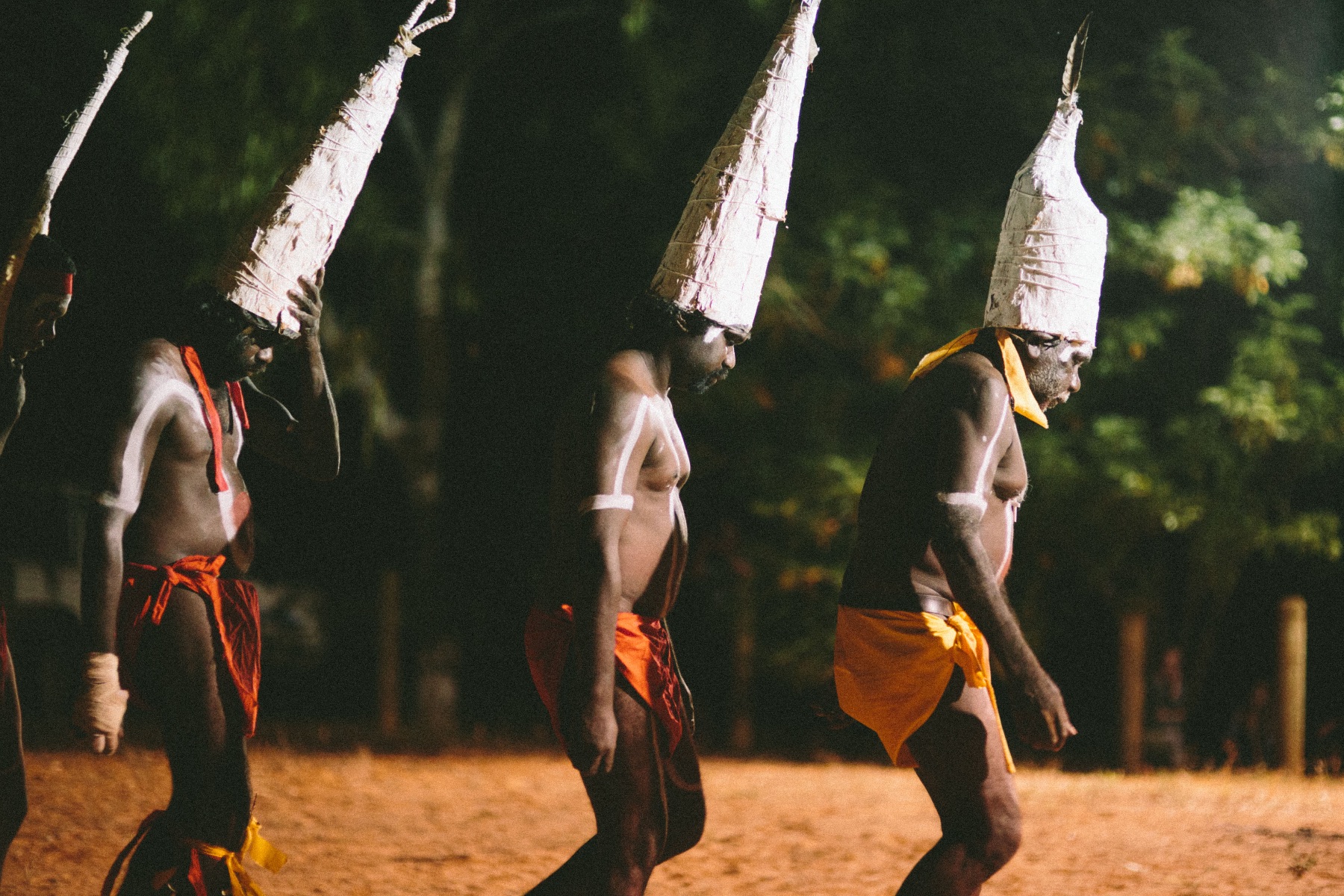
Wangga
The Wangga is a song and dance style that has come to Kununurra from Port Keats and surrounding areas on the north-west coast of the Northern Territory.
Both men and women dance Wangga, painted in ochre and performer to the accompaniment of the clapping sticks and didgeridoo. The Wangga is usually as a children's performance and often tells the story of animal dreaming stories. Dancers must listen intently to mirror the often complicated rhythms of song men and the didgeridoo and clap sticks. It is often done for fun but has a serious side as one of the public dances that is performed as part of ceremony.
